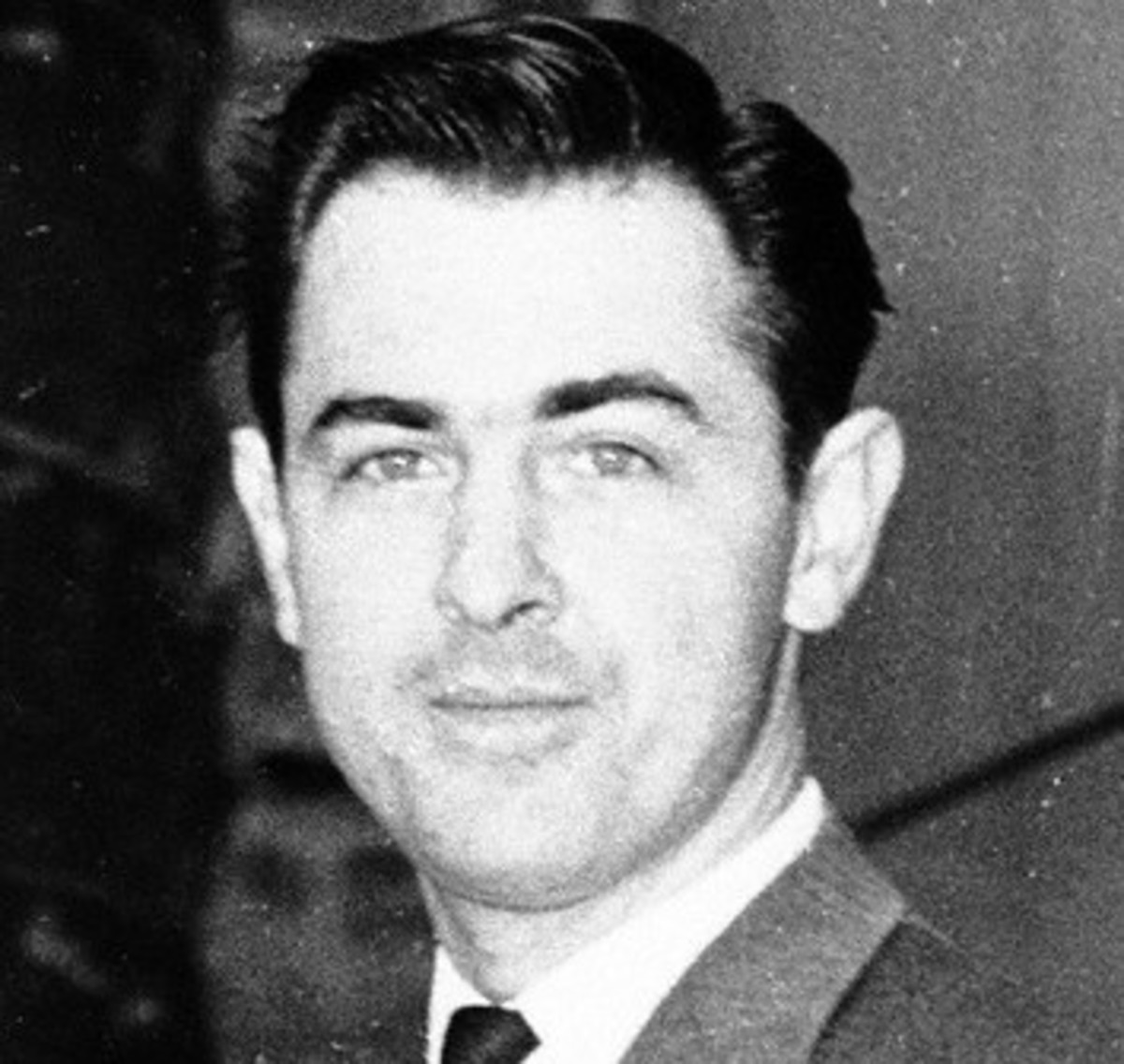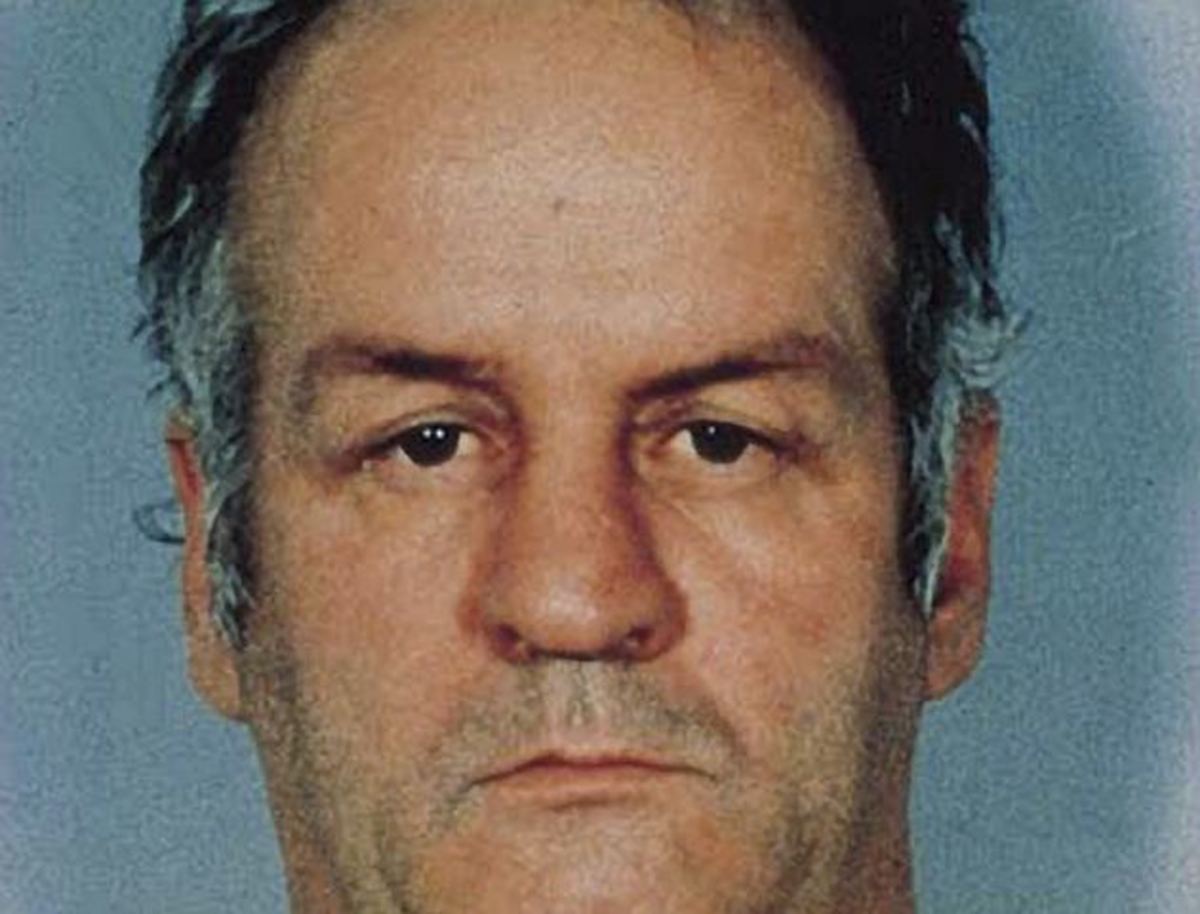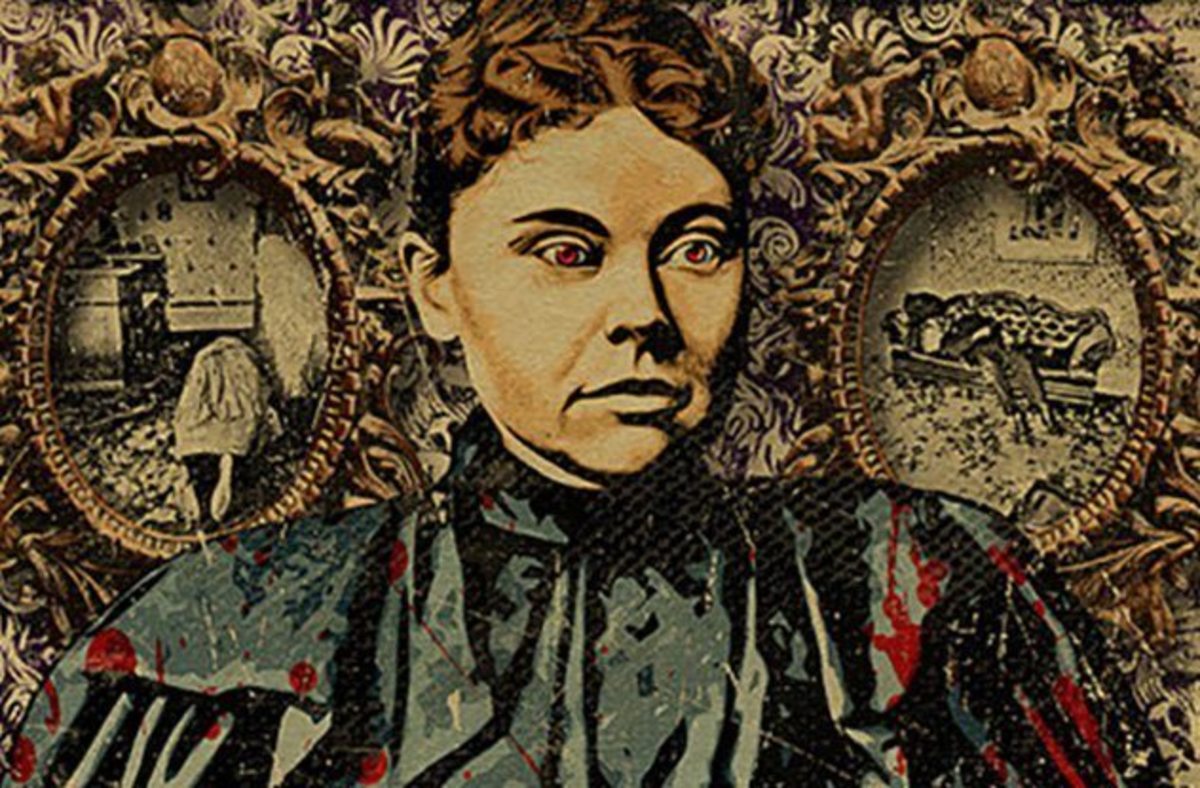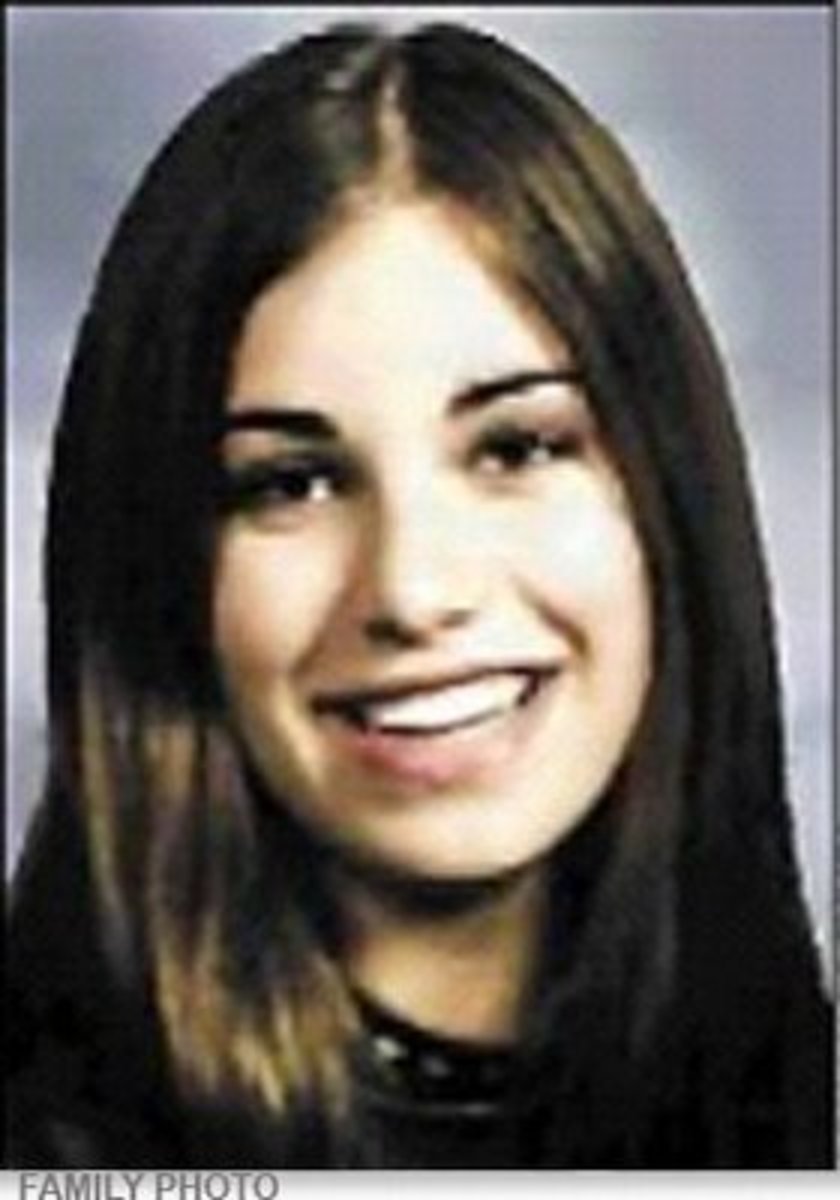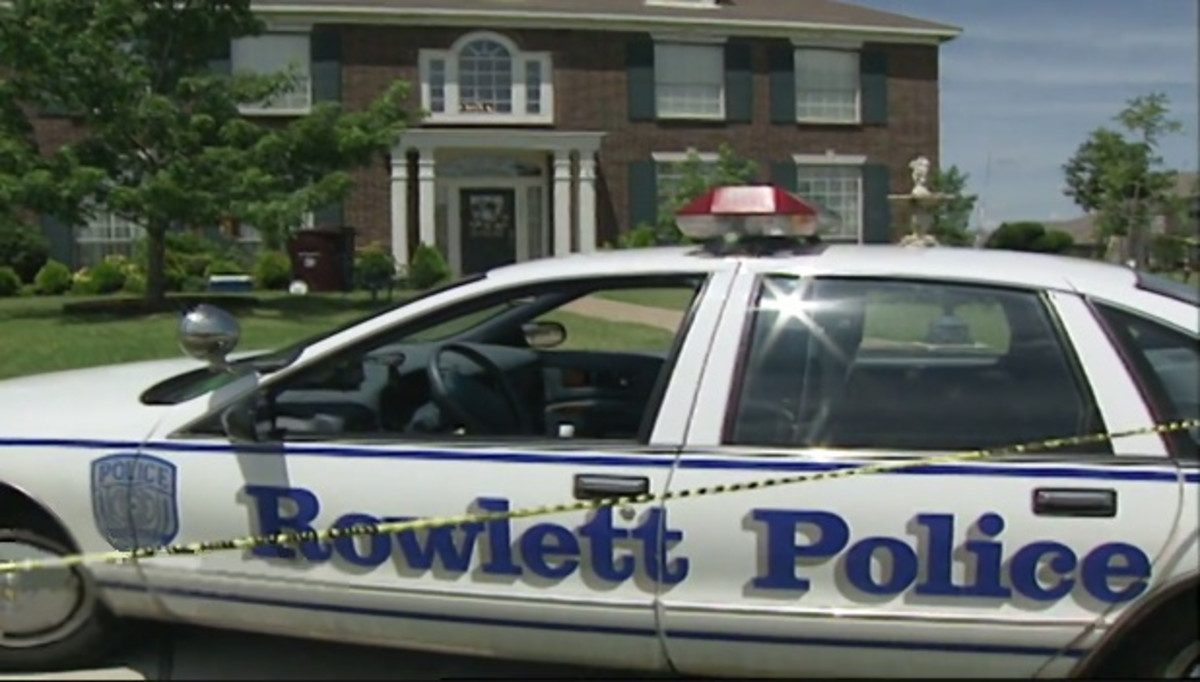Dennis Rader, BTK...Wichita's Serial Killer
Yet Another Hub About This Guy?
Why? Why do we need another Hubber writing about Dennis Rader? The short answer is "We don't" The story has been told and retold, and has been the subject of numerous narratives on TV and can still be seen in documentaries on Discovery, History, MSNBC and probably others. So why am I posting this one? The answer is because during some of Dennis Rader's murderous rampage, I lived in Wichita. People I knew remarked on the case before it was ever solved and revealed their feelings and opinions, and with it some "statements of fact" that were actually false. Since the full story is now available from so many sources and they all collaborate each other, I won't repeat a lot of it. It's fascinating reading for people who are interested in true crime stories, but is available in depth to anyone who wishes to look it up.
Rather, I will tell the story from the perspective of what I saw, heard, and was told. Rader's case, because it spanned so many years, possessed a lot of ambiguity in some areas. It is speculated and may even be probable that there were other, unknown victims, since a prolonged period of inactivity exists in the known record. Also, there are a number of unsolved murders in Wichita, where his involvement may have been questioned, but was never proved.
From a punishment standpoint, none of that makes any difference. Rader's sentence guarantees he will never be a free man again, and a life sentence is the most that can realistically be meted out to him. But for the families of those who still wonder about their loved ones, things still do matter. They would like some answers.
The Start
The first murders Rader was convicted of commiting was for four members of the Otero family at their home located on N Edgemoor Street. The date was January 15th, 1974. In October of that year, he planted an anonymous confession letter in textbook at the Wichita Public Library and alerted a Wichita Eagle reporter as to where to find it. In that letter, he claimed to have a "sexual fetish" that drove him to kill the family and promised there would be more victims.
The fifth victim killed in Rader's second home invasion was named Kathryn Bright. She was murdered in her home located at 3217 E 13th. Her brother accompanied her home that night and Rader attempted to kill him as well. He survived being shot in the head twice, but his description of the killer didn't provide solid leads for the police. This incident happened April 4th, 1974, less than three months after the Otero family.
It was almost three years later, on March 17th, 1977 that the third incident and sixth victim was recorded. She was Shirley Vian and had lived at 1311 S. Hydraulic St. She had three young children at home at the time, who unlike the Otero family, were left unharmed except for being locked in a bathroom during the murder. At least they were unharmed physically. The older son answered the door when Rader knocked, and let him in. The the children witnessed their mother's death through a gap located somewhere in the door or door jamb. Rader later sent a poem to the Eagle regarding the victim.
December 8th, 1977, Nancy Fox was killed at 843 S Pershing. Rader called the crime into to emergency dispatchers himself, identifying the victim and her address. She was number seven.
After this fourth home break-in, the rash of killings stopped, or at least the ones following what appeared to be Rader's MO. He wrote a letter to a TV station in February 1978 disdaining the fact he was not being talked about more. He also said his next victim had been chosen. On April 28, 1979, he invaded a home in the 600 Block of S Pinecrest and waited for the resident to return home. When she didn't he left, taking a scarf with him, and later mailed the scarf and a note to her telling her she was lucky to have stayed away. There was no more activity until 1985 with the strangulation murder of Marine Hedge on April 27th. She had lived in a suburb known as Park City at the address of 6254 N Independence Street. Her murder wasn't connected to Rader until years later, possibly because her body was dumped on a country road instead of left in the home.
Otero's Neighborhood
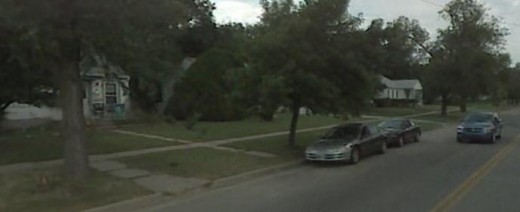
Kathryn Bright
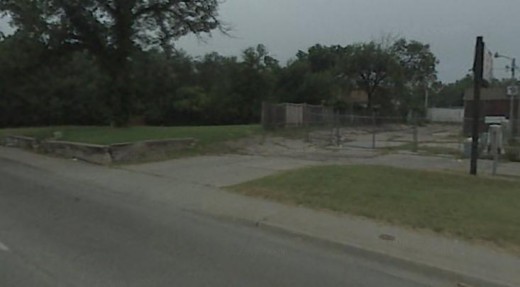
Shirley Vian
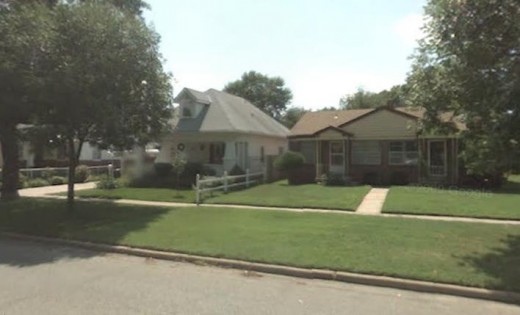
Nancy Fox
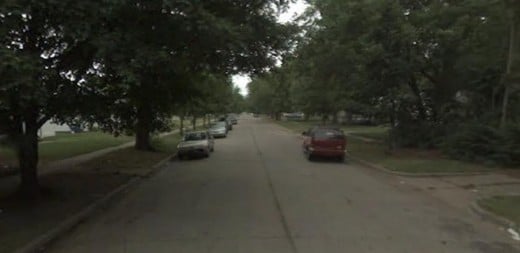
My Time in Wichita
All of these murders happened before I ever moved to Wichita. For me, the city wasn't a place I had much reason to visit, and up to the time I moved there, had probably only visited six or seven times. Most of the news stations on TV and radio came from other areas, and very little of Wichita's news ever reached my hearing. The BTK stories were big enough that they would have made news all over the state, and I undoubtedly was within earshot as some of them were aired. But at the time of my arrival in town, I had no memory of anything except perhaps a vague indistinguishable thread of something terrible happening. And when I moved there in 1986, the town had a reputation for a higher murder rate than the surrounding towns where I lived, or even the state capitol, Topeka.
We moved in, settled down, and began starting life anew in a strange city. Of course with children in school, and myself working, it wasn't too long before we came to know a fairly large number of people. Being new in town, and Wichita being much larger than anyplace we had lived before, one of my primary interests was familiarizing myself with the city. and what was happening there. I asked a lot of questions of the people we met and began to put events with neighborhoods and names. We had arrived in August of 1986, just in time to enroll the kids before school started, and were fairly comfortable withliving there, when a month later, in September, a murder occurred on the other side of town from us. Vicki Wegerle was strangled in her home at 2404 West 13thStreet North and found by her husband. At the time, we were so busy getting adjusted, the whole event didn't register until later. Then in June the following year, a story came out on the evening news. A lady named Hattie Smith had been discovered dead by her husband when he came home from work. She was in the the bathtub, and had been bound, beaten, strangled, and then drowned. The police were investigating. We watched with shock and when the address was given, 3193 S Clifton, it caught my attention. We at the time lived on Hemlock, and Clifton bordered against our back yard. Driven by curiosity mixed with dread and other emotions, we left to see if we could find the home and soon saw a house with numerous official cars, flashing lights, and a mobile crime lab parked in front.
The story ran its course on the daily news, and before long things returned to normal. Wichita is a large town, and the residents have learned to take gruesome acts of violence in stride. It was hard to live there and not notice that about people. Not knowing the town well enough at the time Vicki Wegerle died, and not knowing the series of murders the town had experienced, the similarities of the crimes escaped me. But because of the relatively short time frame, and the similarities they shared, both crimes were being investigated with the possibliity there might be a connection. Despite all efforts, both remained unsolved, and eventually became cold cases.
By this time, I had spoke with enough people that the subject of BTK had been mentioned to me. As I said earlier, I may have had some vague recollection of the stories, but wasn't familiar with any of the details. Friends and co-workers filled me in with their versions, although at this point it had be seven or eight years since anyone had heard anything of him, so the stories I was hearing were often incomplete, exaggerated, or factually incorrect. Of course, at that time I didn't know the difference. One of the incorrect accounts I heard reported that the murderer was living in a neighborhood nearby, and that the police knew full well who he was. He hadn't been arrested because they had no real evidence, but he was under twenty-four hour surveillance. Even other city/county departments, including the fire department were assisting with the watch, and the Fire Chief had stopped him on a city street for a traffic violation......for what a story like that is worth.
But a co-worker told me a few months after the Wegerle murder, that his parents were friends of the family, and how upset they were the case was going nowhere. He went on to tell some of the things he knew, and by then several more employees had joined in. That was my first full picture of the crime spree and what it had meant to the people of Wichita.
Hattie Smith's Home
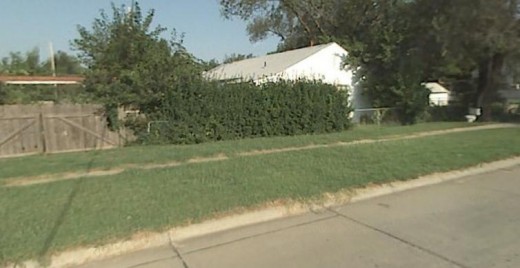
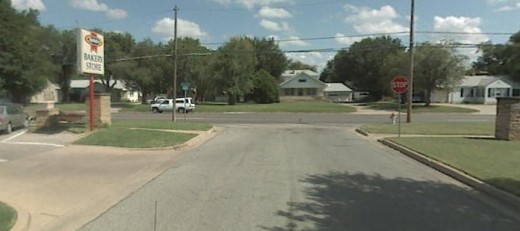
Shannon Olson
Shannon Olson was a fifteen year old girl who lived about two blocks north of the home where Shirley Vian died. Shannon disappeared on Halloween ten years after the Vian death. She was found the next morning naked and dead, having been strangled, and floating in a sand pit north of town. Although her murder has been mentioned in connection with BTK investigations, it was never proven Rader had any involvement. He was never charged with the crime.
The Fager Family
Two months later, on December 31st, 1987, Mary Fager returned home from a two day out of town trip. Entering the home at 7105 East 14th Street, she found her husband Phillip dead on the floor of the living room. He had been shot in the back twice at fairly close range. Downstairs in the basement, the family had a hot tub and she discovered the bodies of her two daughters, Kelli and Sherri dead inside it. The cover had been placed over the top, and u evidence of a home intrusion was apparent. Also a vehicle, a 1983 Volkswagon Rabbit was missing. The investigation revealed the deaths of the children had been by strangulation and drowning, the same as numerous other murders in town. The police focused on the missing vehicle.
Two days later, in Florida, the car was found. It was in the possession of a man named Bill Butterworth. Butterworth was a contractor who had been hired by the Fagers to build a sun room, and he was immediately implicated in the murders. This was a time of shouting throughout the community and in the media. Butterworth claimed he had no memory of how he came to be in Florida with the car, and no memory of the day's events when the people were killed. It was finally decided in his defense, to place him under hypnosis to see if the lost memories could be uncovered.
Hypnotized, Butterworth recalled entering the home about four-thirty PM, near sundown. He had gone to lunch, then returned and thought the older daughter and her boyfriend might be using the hot tub, based on the sounds coming from the house and the condensation on the house's windows. He felt a little embarrassed and left again, and finally went to a shopping center and purchased some clothes. He returned to the home around 4:30 PM. Being January, it was nearly dark at that time, and he noticed no lights inside, so he let himself in with a key the owner had given him. He found Phillip Fager in the living room exactly as Mary Fager would the next day. He noticed Phillip's keys on the floor next to the body, and picked them up. His account suggests he may have had a bad feeling about the house, and at some point he discovered the younger daughter dead in the hot tub. Then, hypnosis revealed that he observed the older daughter fighting with someone, and he panicked, ran out, and after attempting to start his van, grabbed the clothes, and took the Fager's vehicle. The judge allowed the testimony from the hypnosis sessions, and the jury acquitted Butterworth from the crime. The Wichita Police Department subsequently closed the case, stating no evidence existed to implicate anyone else. A few days after finding her family dead, Mary Fager received a note with her mail from someone claiming to be BTK. The note included a sketch of a bound young person lying on the floor next to a hot tub. It also went on to say the writer admired the way the murder had been conducted, but that he, himself was not responsible. BTK may have been breifly considered as the killer, but the focus soon shifted to Butterworth and stayed there.
Fager Family's Neighborhood
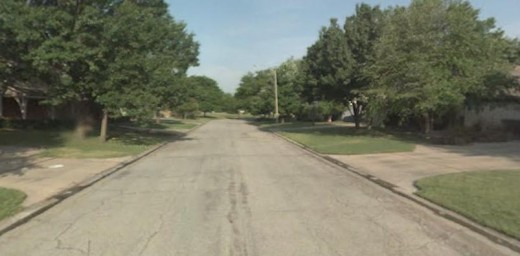
So far as the police and investigating authorities were concerned, nothing much happened in the decade of the eighties that could be attributed to Rader. There were murders, of course, and even some with similarities, but nothing that could be definitively linked to the known crimes of the seventies. In fact, despite everything that was going on, for all intents and purposes, the killer might have moved away, be arrested, died, or possibly simply retired. The quiet continued into the nineties, and although the police occasionally would mention an ongoing investigation, nothing happened, and the general public no longer spent a great deal of time worrying about it.
That didn't change with the death of Delores Davis on January 19, 1991. She had lived at 6226 N Hillside in Wichita, only about two miles from the home of Marine Hedge who died six years earlier. Like Hedge, she was strangled, and like Hedge, her body was taken to another location and dumped. She was found approximately ten miles nortwest from where she lived. Her murder could have easily been mistaken for a random act. Although I lived and worked there at the time, I don't recall anything about her killing.
From that point on, the nineties were quiet. The case was still open but had gone cold. The new millennium rolled over, and in 2003, my wife and I moved from the Wichita area to our current home near the West Coast. But although relocated in body, in my mind, I was still partially living in Kansas, and kept tabs on new reports from Wichita through the Internet. I was somewhat surprised to hear that the killer had come into the forefront in March of 2004. On the 19th, he mailed a letter not only identifying himself as BTK, but also claiming responsibility and divulging previously undisclosed details on the Wegerle case. In addition to that, Wegerle's driver's license was also included, leaving no doubt that she had been killed by the same individual as the Oteros, Fox, Vian, and Bright. This was a relief to Wegerle's husband, because during much of the investigation, he had been a major suspect. Only a lack of convicting evidence had prevented his arrest. But now the cops had a previously unavailable tool to use since they knew the serial killer was someone else, still alive and free. DNA, which had not been in the investigative toolbox during the seventies had now been perfected.
The police also engaged Rader in a battle of wits. They communicated with him throughout 2004, gradually drawing him out, goading him into revealing more about himself until they were able to formulate an identity. Comparing DNA from the murder scenes with that of his daughter closed the case a little further, and information gleaned from a floppy disk Rader supplied led cops to the church where he served as an officer. From that point the investigation concluded quickly and Rader was arrested on February 25th, 2005
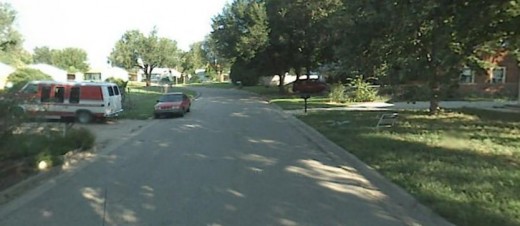

Mary Capps
Dennis Rader was the Compliance Officer for the City of Park City, KS. Park City is a small community of a few thousand people just to the North of Wichita. The Compliance Department was responsible for things like overgrown lawns, barking dogs, and inoperable vehicles, and only had two employees. Rader was one, Mary Capps was the other. She spent nearly seven years working side by side with a notorious serial killer, and after his arrest, her story came out. She has written a book about her experience, and parts of her account are available online. I met Mary Capps in 2003, before I moved out of town. She was a customer at a firm where I was employed, and one day while conducting business we met, and spent a few minutes visiting. The subject of BTK never came up, and honestly, from my perspective was nowhere on the radar screen. It's sobering to realize that while I was completely unaware, she was working in an environment that could have potentially resulted in her death. Here's to you Mary! And for the unseen struggles you survived.
Some Still Live
Dennis Rader confessed to and was convicted of the murder of ten people. He is currently serving ten consecutive life sentences at the federal prison near El Dorado, KS. He may be eligible for release in one hundred, sixty-nine years and twenty days, but somehow I doubt he'll be granted parole. But although his story ends here, the stories of others he affected go on.
Although little has been mentioned of his family, Rader was married. He and his wife had two children, a son and a daughter. A judge granted his wife an emergency divorce shortly after his arrest, and the last I had read, she left Park City. By some accounts she and her daughter may be in Michigan. They deserve their privacy. The home where they lived was sold to the city and demolished on March 7th, 2007 to provide access to a nearby park.
Rader also had three brothers. Presumably, they led normal lives, probably married and had families of their own. On the other hand possibly not, but either way, it doesn't matter.
Two of the Otero children who weren't home at the time of their family's slaying survived, grew up and are living somewhere other than Wichita. Kevin Bright, although shot twice in the head, lived and watched the final developments of the case and the trial. He still suffers from nerve damage due to his injuries. Shirley Vian's son Steve, as a five year old watched with his two siblings through a crack while they were locked in the bathroom as his mother was tied up and strangled. He has been able to start to heal with the arrest and conviction of Rader. Jeff Davis, Deloris Davis' son reported feeling a wide range of emotions, but relief wasn't one of them. He may find it hard to rest while his mother's murderer is alive.
Others not mentioned will feel their own emotions. Vicki Wegerle's son reported hearing rumors at school that his dad was a killer. And most certainly, Nancy Fox and Marine Hedge had relatives whose lives were irrevocably changed the days their loved ones were brutally killed. But what about those who wonder still who took their loved ones. Hattie Smith's husband found her body, but the story doesn't end there. Someone killed her and the mystery has never been solved. And what about Mary Fager? Will she go through the rest of her life never knowing who took her husband and children away from her? Sometimes justice is served, but there isn't always enough to serve everyone.
Some Observations
Dennis Rader by his own words, said he was uncontrollable. He said he couldn't stop. Yet when he plead guilty, it was for ten murders, committed in seven separate acts of violence.
Otero Family---January 15, 1974
Kathryn Bright---April 4, 1974
Shirley Vian---March 17, 1977
Nancy Fox---December 8, 1977
Marine Hedge---April 27, 1985
Vicki Wegerle---September 16, 1986
Deloris Davis---January 19th 1991
I know little about serial killers, and their motivations. But it seems curious to me to look at the time spread between the murders and believe a man who said he couldn't control himself could go for five years or eight years without striking again. Also, although the majority of his victims were strangled, he shot Kevin Bright, and stabbed Kathryn. And although he strangled one member of the Otero family, he suffocated two others, and hanged the youngest from a drain pipe. Then in the cases of Marine Hedge and Deloris Davis, he murdered the victims and removed the bodies from the respective houses to dump elsewhere. So his MO wasn't exactly set in stone, but varied enough to make it plausible that he was responsible for some of the other deaths as well. Only he knows for sure, and he isn't talking.
In the thirty year period between 1974 and 2004, there are twenty-two cold cases remaining unsolved in the Wichita and immediate area. Some of them bear a resemblance to Rader's methodology, but the shear number dictates that other murderers have been involved in some, and possibly, all of them. But the people of Wichita can breathe a little easier and most likely have in the years since Rader was apprehended. Serial killers don't strike every city, and the thirty year nightmare experienced by Wichitans suggests maybe they have borne their share. But humanity being what it is, it's only a matter of time before another individual fighting whatever demons he has, is defeated in the moral battle, and declares war on his fellow human beings. And when it happens, all we can do is watch out for ourselves and our loved ones, and hope the police are a match for his cunning and evil intellect.
Dennis Rader, the man who was BTK
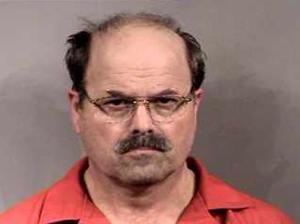
El Dorado Correctional Facility
Dennis Rader, aka BTK is serving his ten consecutive life sentences at the El Dorado Correctional Facility located a few miles east of El Dorado, KS. It is a newer Federal Prison built during the late eighties, the time when Rader was either involved or planning his deeds. Some of Kansas's more infamous convicts now call this place their home. Rader has not been moved from the lock-up since his sentence began except possibly for a cour appearance in 2005. He shows only one record of disciplinary action.

